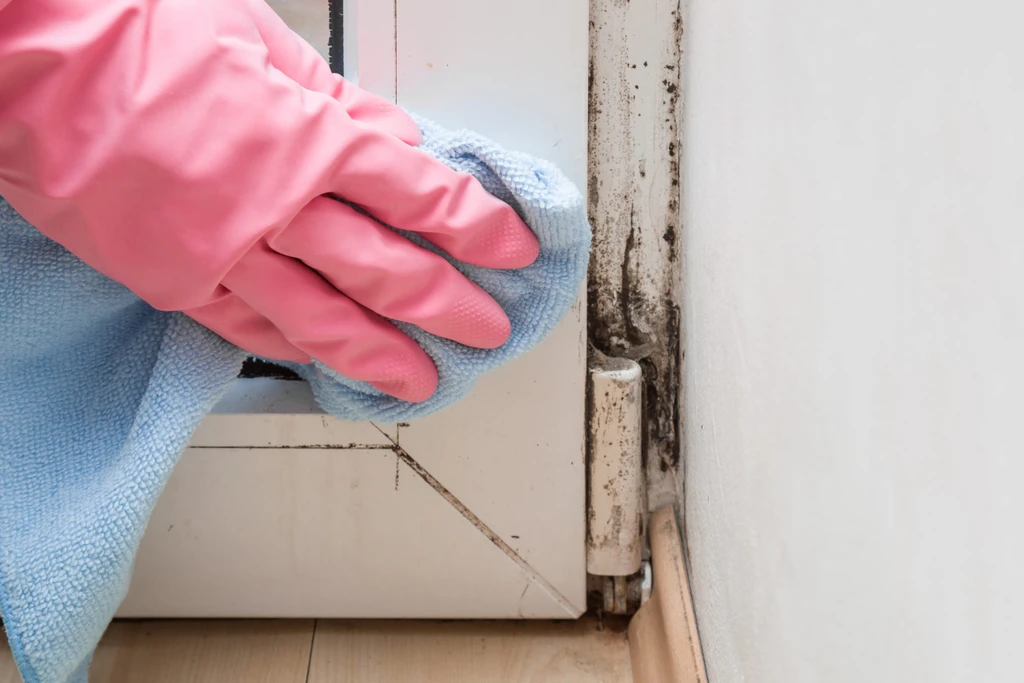Damp, mould and condensation
We know that tackling mould and condensation can be difficult and frustrating.
That’s why we’re committed to working with our customers to recognise the early signs and doing everything we can to support you to be safe and comfortable in your home.
What is condensation?
Condensation is created when warm air is in contact with cold surfaces, or when there’s too much moisture in your home.
It’s usually a more common problem during the colder months. It can be found on or near windows, in the corner of rooms and even in wardrobes or cupboards or behind large items of furniture where airflow is restricted.
The dampness caused by a large amount of condensation can cause mould to grow on walls, furniture and other belongings. It can also cause mildew on fabrics and even cause wood to rot – including window frames. More importantly, it can also damage your health.
The average family creates 112 PINTS of moisture per week!
What causes of damp and condensation
Dampness is often caused by too much moisture in the air. Everyday activities like cooking, showering and drying clothes increase the moisture in your home.
Other issues that cause high moisture levels in your home include:
- Slipped tiles
- Blocked drains
- Broken rainwater pipes
- Faulty damp proof course.
We’ll make sure we quickly fix these things and resolve the issue.
IMPORTANT please tell us about any leaks or early signs of dampness.

How we’ll help resolve damp and mould
We take all reports of damp and mould in our customers’ homes seriously. We’ll work with you to make sure your home is safe to live in.
The guidelines below set out what you can expect from us when you report a case of damp and mould.
Emergency hazards
These are cases where:
- The issue is causing or likely to cause serious health effects.
- The property is uninhabitable or unsafe due to the extent of damp and mould.
- There is visible mould growth, especially black mould, in living areas.
- The damp is linked to structural issues, leaks, or inadequate ventilation.
- Customers have reported health symptoms or there’s medical evidence of the impact (we won’t delay taking action while we wait for medical proof).
We’ll take action to investigate and make your home safe within 24 hours.
Significant hazards
There are cases where:
- Immediate emergency action isn’t required but prompt action is still necessary.
- The hazard must be associated with exposure to damp, mould, or fungal growth.
- It must arise from a deficiency in the property or surrounding building/land that we’re responsible for.
We’ll take action to investigate the cause of the damp and mould within 10 working days and provide you a full written report within 3 working days of an inspection.
How to manage condensation
You can help us better manage damp, mould and condensation in your home by making sure your it’s heated and well-ventilated. By making small changes to your daily routine, you can create a healthier home.
Drying clothes
If you can, try to dry your clothes outside. If you need to dry them indoors, put them on a drying rack in a sunny or heated room where a window can be opened slightly and keep the door closed.
Cooking
To reduce moisture, you should keep lids on pans when cooking and use an extractor fan. Keep the kitchen door closed to stop moisture spreading to other rooms.
Heating
Try to keep a constant temperature of 19°C in all rooms. This will reduce the likelihood of water vapour condensing on cold surfaces. Avoid heating your home for short bursts of time. Learn to use your heating system and thermostatic controls to heat your home efficiently.
Ventilation
Open your windows regularly, but always after producing moisture by doing things like running a bath. Open trickle vents in double-glazed windows and leave your windows ajar if it’s safe to do so. You could also think about installing a dehumidifier.
The average cost of running an extractor fan is £10 per year!

How to manage condensation
More useful steps to reduce condensation:
- Keep a small gap between large items of furniture and the walls to help air to circulate.
- Keep your curtains open during the day to let natural light in – as mould thrives in the dark.
- Consider some indoor house plants that are good at absorbing humidity.
- If you use a tumble dryer, make sure that it ventilates outside of your home.
- Always cook with pan lids on and reduce the heat once the water has boiled.
- Always leave a small window open while cooking to allow excess moisture to escape.
- If you have an extractor fan, run it for 10 minutes after a bath or shower.
- Filling your bath with cold water before adding hot will significantly reduce the amount of steam created.
Removing mould
You should remove mould as soon as it appears. The good news is that, although mould is unpleasant it can be treated easily if tackled early.
- Always wear rubber gloves, safety goggles, and a dust mask before cleaning mould.
- Wipe down the affected area with a fungicidal wash or spray that’s been approved by the Health and Safety Executive (HSE).
- Always follow the instructions of the cleaning product you’re using very carefully.
- Please note, chlorine bleach can only kill surface mould and won’t destroy its roots.
- After treatment, use fungicidal resistant paint to help prevent regrowth.
- Don’t try to remove mould using a brush or vacuum cleaner.



![[LGGRA-3182] Icons_Wrench](https://www.guhg.co.uk/wp-content/uploads/2024/12/lggra-3182-icons-wrench.png)
![[LGGRA-3182] Icons_support](https://www.guhg.co.uk/wp-content/uploads/2024/12/lggra-3182-icons-support.png)
